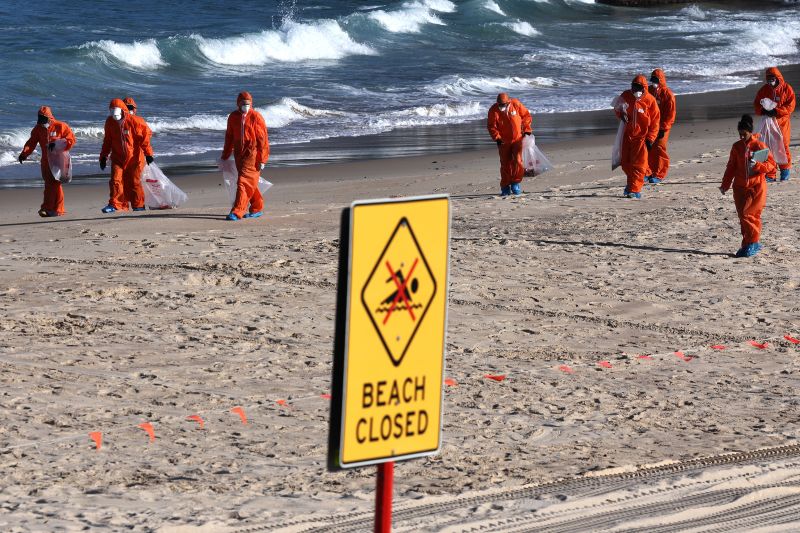In November 2020, residents of Sydney’s shores witnessed an astoundingly peculiar phenomenon. Mysterious black balls started washing up on the city’s beaches in abundant quantities. Bringing with them an unbearable and unpleasant stench, these ovoid forms, once deposited on the sandy beaches, captivated the interest of scientists and the community, who set out to understand what exactly they were. As it turns out, these intruding objects were nothing short of mini ‘fatbergs’ visiting from the sea.
Derived from the combination of ‘fat’ and ‘iceberg’, the term ‘fatberg’ was coined to define the gigantic mass of solid waste that clogs the sewer systems. The waste comprises predominantly non-biodegradable matter including cooking fat, wet wipes, condoms, diapers, and other household waste that goes down our pipes and is not designed to disintegrate in water. Though the concept of fatbergs in the sewer lines is a well-known phenomenon, their miniature counterparts making a grandiose appearance on the beach was a whole new spectacle.
These spherical black masses were found drifting ashore Sydney’s Collaroy and Long Reef beaches in abundance. What was strange was their hold on the senses as they didn’t merely visually stand out but were also responsible for a pervasive stench across the beach. The initial hypothesis, considering the black exterior, was that these may be natural tar balls formed from fossil fuel pollution. However, laboratory analysis of samples identified these as mini fatbergs on an eerie sojourn from the sea.
Upon closer examination by scientists from the Coastal Environment, it became clear that the black outside shell was predominantly hardened fat and oils fused with beach sediments, while the inside was a chaotic mix of oil, beach sands, and indigested waste materials. These blobs evolve in the sea, where fat and oils discharged from local outlets come in contact with the salty seawater and stubbornly solidify. The constant action of waves and sediments interacting with these discharges over time shape them into round balls.
Another striking feature of these small fatbergs was their ability to increase in quantity during rainy weather or following a storm. This link was attributed to the overflow of stormwater systems which transport higher amounts of oil, grease and plastic waste from households, consequently leading to the multiplication of these foul-smelling globules.
The appearance of these minuscule black spheres, although fascinating, signals a grim reality. They are stark evidence of the redundancies in our waste management systems and are emblematic of the human-made burden we impose on nature. The risks associated with these globs are significant as these dens of fat and other pollutants can engulf marine life and are additionally harmful when ingested by wildlife, posing a threat to the ecosystem.
Furthermore, they can potentially play a detrimental role in damaging the appeal of the seaside, hurting the local tourism industry. Handling these fatberg balls is equally distressing because of their revolting smell and the hazardous substances they contain.
Addressing this environmental concern requires an earnest commitment towards efficient domestic waste disposal practices. It also signifies the need for cities and urban areas to review their wastewater treatment processes and the potential to implement progress in stormwater and sewage systems. Such advancements could inhibit fat and oil discharges from entering the sea, thus, preventing the formation of these fatbergs.
In a broader sense, the emergence of these mysterious black balls on Sydney’s beaches has emphasized the dialogue surrounding environmental pollution. It underlines the importance of significant systemic changes towards water and waste management, and essentially forces society to rethink their nonchalant attitudes towards the environment. Ultimately, by addressing these issues, we could avoid the recurrence of such instances and preserve the innate purity and the integrity of our coastlines.




